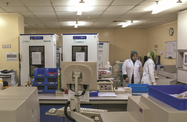Rising demand for private health care will continue to drive expansion in Malaysia’s medical tourism industry this year, although increasing competition and global economic challenges risk inhibiting growth.
As an established medical tourism destination, Malaysia is well placed to make the shift from core health services to the promising wellness segment, according to a report released in late January by consultancy Frost & Sullivan.
However, the industry will need to invest more heavily in key areas, such as human resources, if it is to achieve sustainable growth and compete against new players in the market.
Growth prospects
Malaysia has witnessed slower growth in the medical tourism segment over the last two years. A total of 882,000 tourists came to Malaysia for health care purposes in 2014, a year-on-year (y-o-y) increase of less than 1%. In contrast, the number of medical tourists rose by 21% y-o-y in 2013.
Year-end 2015 data has yet to be released, but officials have publicly acknowledged that although arrivals were up y-o-y, growth fell short of full-year targets.
While medical tourism accounts for just a fraction of overall foreign tourist arrivals, which are expected to reach 30.4m in 2016, the sector has significant growth potential.
Although Thailand remains the dominant player in Asia-Pacific, with around 50% of the regional market share for medical tourism compared to Malaysia’s share of 3%, Malaysia is well placed to expand its client base and revenue in the coming years.
The Frost & Sullivan report found that medical tourism, along with elder care, would drive health care sector growth in the medium-to-long term.
Despite trailing Thailand in terms of patient numbers and earnings, Malaysia represents a high growth market for medical tourism in the region, with revenue levels rising by around 15% per annum, the report noted, outpacing the broader market.
Capacity investment
While Malaysia has the foundations in place to grow as a health care destination, Rhenu Bhuller, a partner at Frost & Sullivan, said additional investment, especially in human resources, was required to sustain growth.
“Malaysia needs to further develop health care resources, particularly specialists and ancillary health care workers, and technical health care skills, as there is a resource gap,” she said.
Looking ahead, the government aims to promote development of three health care hubs in particular, in Penang, Malacca and Johor Bahur, as part of the country’s current five-year development blueprint, the 11th Malaysia Plan, to run from 2016 through to 2020.
Niche focus
Rising international interest in wellness and traditional therapies could also support Malaysia’s efforts to raise its profile as a medical tourism destination.
Having previously focused largely on core medical services, Malaysia is well placed to tap into this growing segment, according to Sherene Azli, CEO of the Malaysia Healthcare Travel Council, a state agency that promotes the development of medical tourism.
“We now know that wellness is a growing sector, especially for countries where the people have the spending capacity,” she told local media in mid-January. “They are very much interested in looking at prevention, simple things like detoxification, or alternatives like traditional complementary medicine.”
Post-operative medical services are expected to be another key focus area.
“We want to also create a holistic health care ecosystem for our health care travellers by offering wellness packages to complement the patients’ post-treatment recuperation period,” Azli said.
Source market expansion
Approximately 80% of the medical tourists that visited Malaysia in 2015 hailed from neighbouring countries, including competitor markets like Thailand and Singapore, according to a recent report by the global retirement services publication International Living.
However, both state agencies and the private sector have been reaching out to markets farther afield, including Japan and the Middle East, through promotional campaigns.
The wide availability of halal food and prayer spaces gives Malaysia a particular edge when it comes to targeting Middle Eastern markets. Azli cited the range of halal medicines and treatment options, which are both gelatine- and porcine-free, on offer as another competitive advantage.
According to International Living, the fact that most doctors working in private hospitals have been trained in the US or the UK and speak fluent English gives the country a further advantage. Malaysia is also home to eight facilities with accreditation from the US-based accreditation body Joint Commission International.
Cost competitiveness
In a report published in mid-January, International Living ranked Malaysia as one of the world’s top-four medical tourism destinations in terms of service quality, accessibility, the standard of post-procedure recuperation options and cost competitiveness.
The country’s cost effectiveness received a further boost from depreciation of the ringgit, which lost close to 20% of its value against the US dollar over the course of 2015.
Oxford Business Group is now on Instagram. Follow us here for news and stunning imagery from the more than 30 markets we cover.

